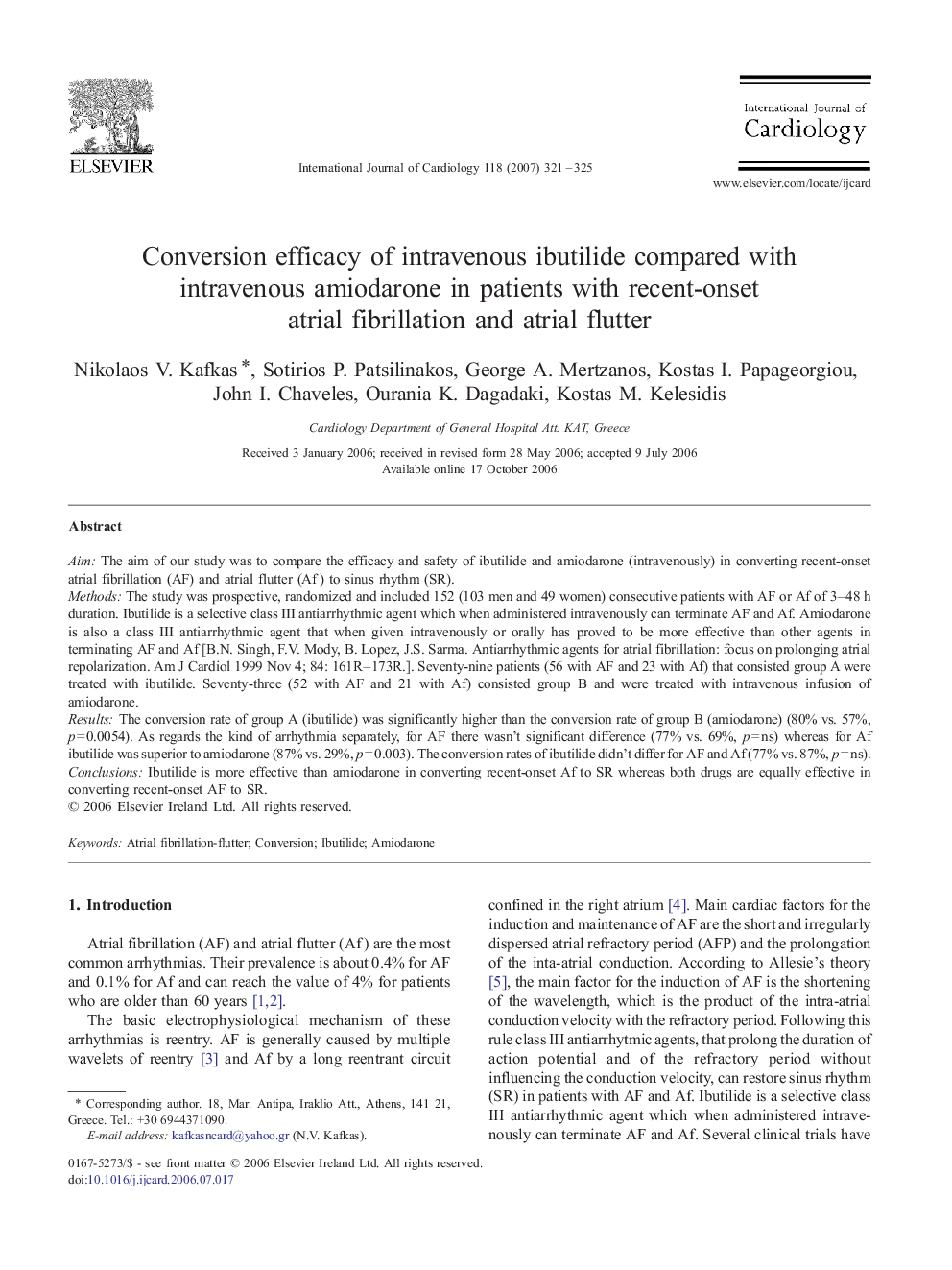| Article ID | Journal | Published Year | Pages | File Type |
|---|---|---|---|---|
| 2936328 | International Journal of Cardiology | 2007 | 5 Pages |
AimThe aim of our study was to compare the efficacy and safety of ibutilide and amiodarone (intravenously) in converting recent-onset atrial fibrillation (AF) and atrial flutter (Af) to sinus rhythm (SR).MethodsThe study was prospective, randomized and included 152 (103 men and 49 women) consecutive patients with AF or Af of 3–48 h duration. Ibutilide is a selective class III antiarrhythmic agent which when administered intravenously can terminate AF and Af. Amiodarone is also a class III antiarrhythmic agent that when given intravenously or orally has proved to be more effective than other agents in terminating AF and Af [B.N. Singh, F.V. Mody, B. Lopez, J.S. Sarma. Antiarrhythmic agents for atrial fibrillation: focus on prolonging atrial repolarization. Am J Cardiol 1999 Nov 4; 84: 161R–173R.]. Seventy-nine patients (56 with AF and 23 with Af) that consisted group A were treated with ibutilide. Seventy-three (52 with AF and 21 with Af) consisted group B and were treated with intravenous infusion of amiodarone.ResultsThe conversion rate of group A (ibutilide) was significantly higher than the conversion rate of group B (amiodarone) (80% vs. 57%, p = 0.0054). As regards the kind of arrhythmia separately, for AF there wasn't significant difference (77% vs. 69%, p = ns) whereas for Af ibutilide was superior to amiodarone (87% vs. 29%, p = 0.003). The conversion rates of ibutilide didn't differ for AF and Af (77% vs. 87%, p = ns).ConclusionsIbutilide is more effective than amiodarone in converting recent-onset Af to SR whereas both drugs are equally effective in converting recent-onset AF to SR.
